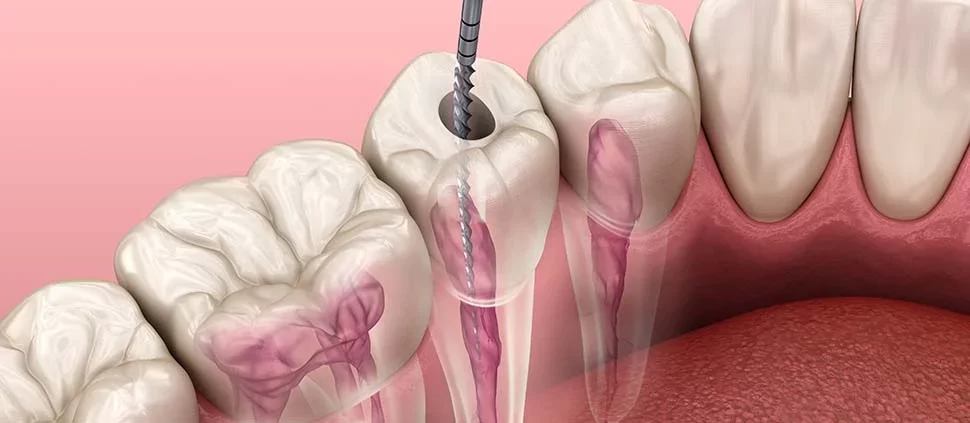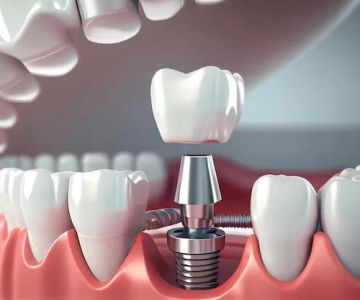
How to Restore Teeth After Root Canal: A Complete Guide
- 1. Understanding Root Canal Treatment
- 2. The Importance of Restoring Teeth After a Root Canal
- 3. Popular Restoration Options After Root Canal
- 4. Dental Crowns for Tooth Restoration
- 5. Dental Implants for Permanent Restoration
- 6. Real-Life Success Stories of Tooth Restoration After Root Canal
- 7. Choosing the Right Restoration for Your Needs
1. Understanding Root Canal Treatment
Root canal treatment is a common procedure designed to treat infection or damage inside a tooth. It involves removing the infected pulp, cleaning the inner canals, and sealing the tooth. While root canals save millions of teeth each year, they often leave the tooth more fragile. After a root canal, it’s essential to restore the tooth to maintain its strength, appearance, and functionality.
Once the infected tissue is removed, the tooth is no longer as protected as it once was. As a result, it can become brittle and prone to cracking or breaking. This is where proper restoration comes into play, ensuring the tooth can function properly for years to come.
2. The Importance of Restoring Teeth After a Root Canal
Restoring a tooth after a root canal is crucial for several reasons. First, an untreated tooth can weaken over time, leading to fractures or further damage. Second, the tooth may become more sensitive or less functional if not properly restored. Lastly, restoring the tooth with the appropriate dental restoration can help prevent further infection.
Without restoration, your tooth may not be able to withstand normal chewing forces. Additionally, a missing or damaged tooth can affect your bite and cause problems with adjacent teeth. Restoring the tooth after a root canal ensures the health of your entire mouth.
3. Popular Restoration Options After Root Canal
After a root canal treatment, there are a variety of restoration options to choose from. The best option depends on the location of the tooth, your overall dental health, and your aesthetic preferences. Below are some of the most common restoration options:
1. Dental Crowns
Dental crowns are one of the most common ways to restore a tooth after a root canal. A crown completely encases the damaged tooth, providing both strength and protection. Crowns are often made from materials like porcelain, which can mimic the look of a natural tooth.
2. Tooth-Colored Fillings
In some cases, tooth-colored fillings may be used to restore a tooth after a root canal. These are ideal for smaller teeth and can provide a more aesthetically pleasing restoration, especially for visible teeth.
3. Dental Implants
If the tooth is severely damaged and cannot be restored with a crown or filling, a dental implant may be the best option. An implant replaces the root of the tooth and serves as a foundation for a replacement crown.
4. Dental Crowns for Tooth Restoration
Dental crowns are an excellent solution for restoring teeth after a root canal, particularly for molars or teeth that undergo a lot of pressure from chewing. Crowns are custom-made to fit over the tooth, and they provide both functional and cosmetic benefits.
Porcelain crowns are often preferred for their natural appearance. They are durable, long-lasting, and resistant to staining. In some cases, crowns can last upwards of 10-15 years with proper care. For patients looking to restore their smile, porcelain crowns provide a great balance between strength and aesthetics.
5. Dental Implants for Permanent Restoration
For teeth that are too damaged to be restored with a crown, dental implants offer a permanent solution. A dental implant is a titanium post that is surgically placed into the jawbone to act as the new root for the missing tooth. After the implant fuses with the bone, a crown is placed on top to restore the appearance and function of the tooth.
Dental implants offer several advantages, including enhanced durability, a natural appearance, and the ability to prevent bone loss in the jaw. Implants are a long-term solution and can last a lifetime with proper care, making them an excellent investment for people looking for a permanent tooth restoration after a root canal.
6. Real-Life Success Stories of Tooth Restoration After Root Canal
Consider Sarah, a 42-year-old woman who underwent a root canal on one of her molars. After the treatment, her dentist recommended a dental crown to restore the tooth's function and appearance. Sarah was thrilled with the result, as the porcelain crown not only fit perfectly but also looked just like her natural tooth.
Similarly, John, a 55-year-old patient, lost a tooth due to severe decay. After his root canal, he chose a dental implant as a long-term solution. The implant provided a secure and permanent restoration, allowing him to eat and speak without any issues.
These examples demonstrate how effective tooth restoration after a root canal can be, offering patients both functional and aesthetic benefits.
7. Choosing the Right Restoration for Your Needs
Choosing the right restoration option depends on several factors, including the location of the tooth, the extent of damage, and your overall dental health. Consulting with a dentist who specializes in post-root canal restoration is essential to determine the best solution for you.
At Dentistry Toothtruth, our team of experienced dentists is here to guide you through the restoration process and help you make an informed decision about your treatment. Whether you need a dental crown, implant, or other restoration options, we are committed to providing the best care possible for your smile.
To learn more about restoring teeth after a root canal, or to schedule your consultation with our expert dental team, visit Dentistry Toothtruth today.







 Allendale Dental King of Prussia PA3.0 (10 review)
Allendale Dental King of Prussia PA3.0 (10 review) SA Orthodontics5.0 (62 review)
SA Orthodontics5.0 (62 review) David J Wiseman, DDS4.0 (11 review)
David J Wiseman, DDS4.0 (11 review) Above & Beyond Dentistry & Implants4.0 (540 review)
Above & Beyond Dentistry & Implants4.0 (540 review) Dr. Irina Babayan4.0 (9 review)
Dr. Irina Babayan4.0 (9 review) Elizabeth D. Caughey D.D.S. PC4.0 (19 review)
Elizabeth D. Caughey D.D.S. PC4.0 (19 review) The Importance of Oral Health Education During Pregnancy for a Healthy Pregnancy
The Importance of Oral Health Education During Pregnancy for a Healthy Pregnancy Best Tips for Brushing Your Teeth Properly for Healthy Gums: Essential Techniques for Oral Health
Best Tips for Brushing Your Teeth Properly for Healthy Gums: Essential Techniques for Oral Health Why Skipping Dental Checkups Can Lead to Bigger Oral Health Problems
Why Skipping Dental Checkups Can Lead to Bigger Oral Health Problems Advantages of Porcelain Dental Restorations
Advantages of Porcelain Dental Restorations How Can Diabetes Cause Tooth and Gum Problems? Preventing and Managing Oral Health Issues
How Can Diabetes Cause Tooth and Gum Problems? Preventing and Managing Oral Health Issues Healthy Habits for Promoting Good Oral Health and Hygiene: Tips for a Healthy Smile
Healthy Habits for Promoting Good Oral Health and Hygiene: Tips for a Healthy Smile